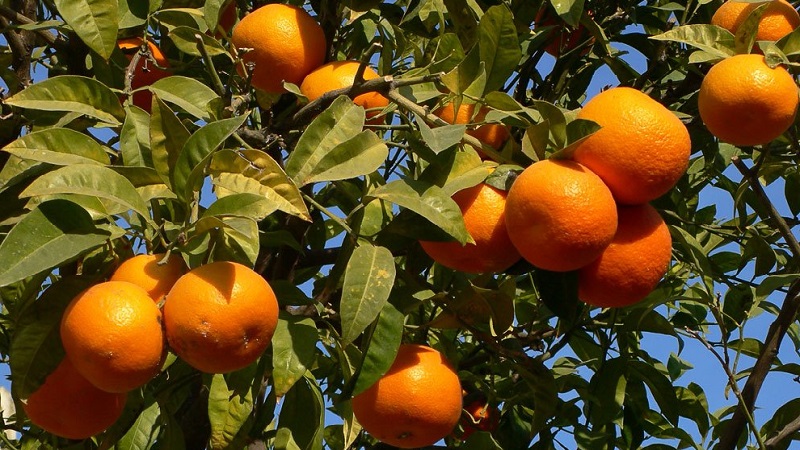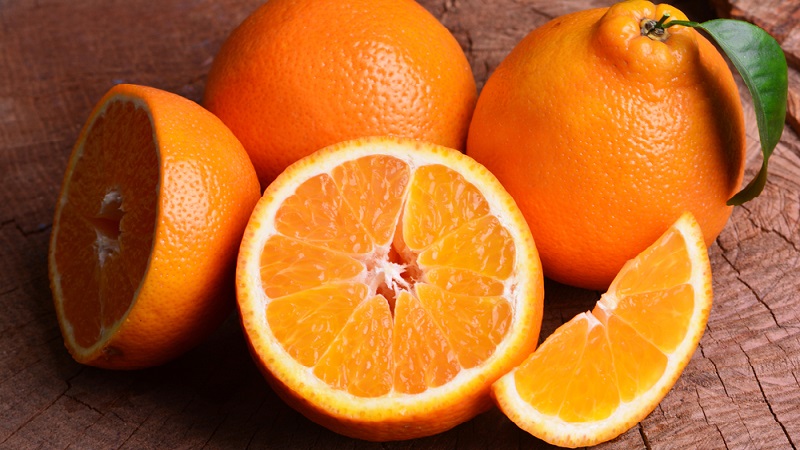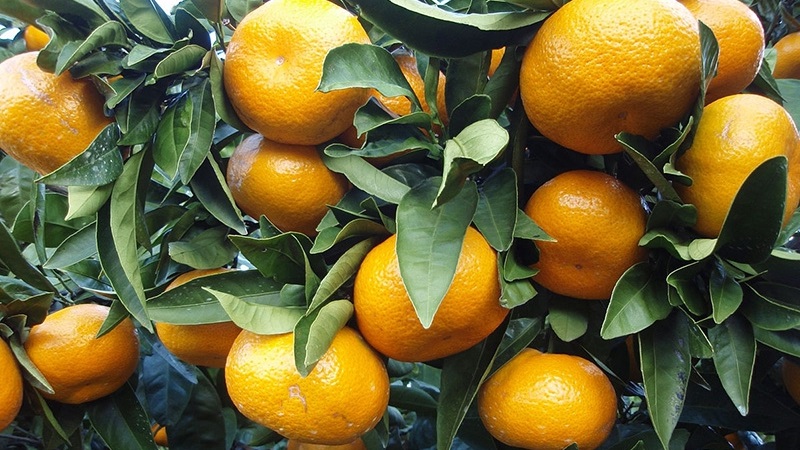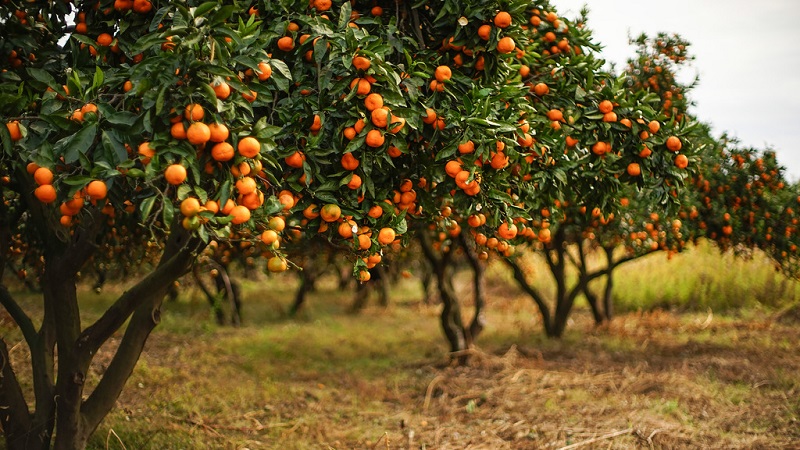What is mandarin: where is it from, how and where it grows
The bright yellow or orange fruit of the tangerine tree comes from wild trees that grow in the southeast of modern China. Today mandarins are grown in many countries (where conditions are right for this) and are among the most popular citrus fruits in the world.
The tangerine season begins in November-December and lasts about seven months. Juicy slices are much sweeter and juicier than orange ones. The thin peel with a high content of essential oil is easy to peel and emits a strong aroma. From the article you will learn what a mandarin is, where the name comes from, in which countries the trees grow, what they look like and when the fruits ripen.
The content of the article
History of origin and birthplace of the mandarin
The genealogy of citrus fruits is poorly understood, therefore information on the process of their domestication is extremely scarce.... To fill this gap, scientists from Spain, France and the United States have taken to tracking the history of citrus crops. The research results are published in the oldest scientific journal Nature.
In the course of research, it was found that the first citrus fruits appeared in Southeast and South Asia.... These fruits resembled all citrus fruits known today at the same time. Further, the plant spread across the subtropics and tropics - from the western part of Pakistan to the central part of China, appeared on the Polynesian islands, Melanesia, New Guinea and the northeast of the Australian continent. As a result of crossing plants with different traits, limes, lemons, oranges, grapefruits and tangerines appeared.

Led by Daniel Roxar (Joint Institute of Genetics, US Department of Energy) and Manuel Talona (Agricultural Research Institute of Valencia), a group of geneticists established the sequence of nucleotides in the DNA molecule of 30 plant species from the genus Citrus... For this, sequencing methods were used (translated from English. Sequence means "sequence"). At the same time, scientists analyzed the known genomes of 28 species of the genus Citrus and plants of the genus Severinia (Roots). This helped establish the time and place of origin of citrus fruits.
Genetic data show that plants appeared about 8 million years ago in southeastern China, northeastern India and Myanmar. This is also confirmed by archaeological finds in the Yunnan province - the fossilized remains of extinct citrus fruits of the late Miocene (8-6 million BC).
The spread of plants across tropical Asia took about 2 million years.... According to scientists, this was facilitated by changes in the climate - it became drier, and the monsoon rains decreased.
In the process of "domestication" varieties and hybrids appeared... Citron became the "progenitor" for lime, lemon and tangerine. As a result of crossing the pomelo with tangerine, oranges and larger tangerine subspecies arose. And the grapefruit came from the cross-pollination of orange and pomelo.
Mandarin has its own hybrid forms:
- Tangelo (photo below) - the result of crossing a mandarin and grapefruit. The fruit tastes like oranges.
- Tangors - the result of crossing a mandarin and an orange. Taste - tangerine, with sourness.
- Mandarin Satsuma or Satsuma - sweet mandarin with juicy pitted pulp.

On the territory of modern European countries, including the Mediterranean, citrus fruits appeared about 2.5 thousand years ago... In Syria, Egypt and Palestine, citron was highly valued, despite its low edibility.Mandarins were brought to Europe in the early 19th century. According to one of the versions, in 1840 the Neapolitan Michel Tenor delivered a tangerine tree to Italy. Europeans liked the fragrant fruits. At first, the culture was grown in greenhouses, then in the open field in southern Italy and France, and later in other countries with a mild climate.
Interesting on the site:
The first mentions and origin of the name
A Chinese manuscript dated 1178 describes 27 varieties of mandarins... The fruits of the tangerine tree got their usual name in China. According to one version, tangerines were available exclusively to rich and well-born Chinese officials - tangerines. Translated from Portuguese, mandarim means advisor. According to another version, the fruit got its name due to the similarity of the color of the peel and the color of the clothes of officials.
It is most correct to call tangerines exclusively yellow fruits.... Fruits with orange peel are commonly called tangerines in other countries. However, in Russia, this color division did not take root.
Interesting. The Chinese have a New Year tradition dating back over 1000 BC. e. - to give the owners two tangerines upon arrival. The owners of the house give the same amount of fruit to the outgoing guests. Translated from Chinese, "a pair of tangerines" means "gold", which is quite symbolic.
Is it a fruit or a berry?
According to the botanical description, tangerine is a representative of citrus fruits, that is, neither a berry nor a fruit... The scientific name for mandarin is hesperidium, a multi-seeded, multi-nested fruit, a special kind of berry-like fruit. The pulp is covered with exocarp - a shell of a rich yellow color. Under it there is a spongy layer - albedo and endocarp. Hesperidium is formed from the upper ovary, which is typical for the citrus subfamily.

Botanical description
Mandarin (lat.Citrus reticulata) - a plant belonging to the genus Citrus (Citrus), the family Rutaceae (Rutaceae)... The same name refers to the fruits of this culture.
What does a tangerine tree look like? Its height at a young age does not exceed 4 m, and closer to 30 years it reaches 5 m. The rhizome is powerful, spreading, exceeds the diameter of the crown. Shoots are dark green at a young age and turn brown as they age.
Plant lifespan - 80-100 years old.
The leaves are small, elliptical or ovoid, pointed at the ends, with a glossy splash. The structure is dense. Petioles are winged or wingless. Foliage renewal - every 4 years.
Flowering begins in April and ends in June... During this period, the trees look elegant - white or pale cream flowers exude a pleasant aroma, reminiscent of the smell of bergamot. The flowers are self-pollinated, arranged in pairs in the leaf axils. The petals are white, matte. Stamens are mostly with underdeveloped anthers and pollen.
Fruits - multi-celled, with or without seeds... Diameter - 4-6 cm. Shape - rounded, slightly flattened at the poles. Visually, the width is greater than the height. The pulp is juicy, sweeter than an orange, yellow-orange color, cut into 10-12 lobules with fusiform juice sacs. Weight - 30-100 g. The maximum sugar content is 13.5%.
The rind or outer layer, scientifically named flavedo (Latin flavus - "yellow"). When the tangerines are ripe, the rind turns bright orange. The peel is thin, easily removed from ripe fruits, contains globular glands with essential oil. For some, the skin and flesh are not in contact with each other. There is an air layer between them.
The inner layer located under the orange peel is called albedo (Latin albus - "white"). The structure is loose. In the early stages of fruit formation, albedo serves as a source of moisture. After the appearance of juice sacs, the layer atrophies, becomes spongy.

When do tangerines ripen? The culture enters fruiting 3-4 years after planting... Ripening period - October-December.Fruiting lasts 6-7 months. Productivity from one tree that has reached the age of 30-45 years is 500-1000 fruits per year. The indicator is unstable and varies depending on the characteristics of the variety, plant health, conditions and place of growth. Trees love warmth, sun and moisture.
Read also:
How to care for a pomegranate in a pot
How to tell a tangerine sprout from a lemon
A close inspection of the leaves will help distinguish lemon and tangerine sprouts.:
- Lemon the leaf plate is elongated, ovoid, serrated in a crenate or finely serrated type. The petioles are short, without wings. The color of the leaves and young shoots is soft green.
- Have a tangerine the leaf blade is pointed, dark green, oval. The edges are wavy or smooth. The petiole is 1-1.5 cm long, with underdeveloped wings 1 mm long. However, there are varieties with wingless leaves.
Where tangerines grow
The culture is widespread in India, China, Japan and South Korea... Mandarins are actively cultivated in Italy (Sicily) and Spain, Greece (Argolis region), southern France, Turkey, Morocco, Egypt, Algeria, Florida (USA), Argentina and Brazil.
The culture is cultivated on the territory of the countries of the former USSR: in Georgia, Abkhazia, Azerbaijan, in the Transcaucasia, on the Black Sea coast.
Conclusion
Mandarin is a favorite citrus of many. To find out on the territory of which modern country tangerines appeared, genetic scientists had to conduct a series of studies of the known genomes of citrus fruits. The researchers managed to find out that the homeland of this culture is the Southeast of China, the Northeast of India and Myanmar.
The tree blooms from April to June. After that, it remains to wait for the tangerines to ripen. This happens in November-December, depending on the growing region. Tangerines are called fruits with a bright yellow skin, with sweet and sour pulp. Tangerines refer to fruits with an orange peel, but this name did not take root in Russia.
Mandarins are grown in countries with warm climates: Brazil, Italy, Greece, Spain, Turkey, Azerbaijan, Abkhazia, Morocco. Up to 1000 fruits are harvested from one adult tree per year.